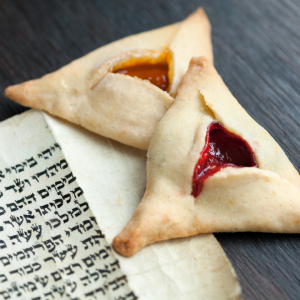Services every Saturday at 10:40 AM
Purim
Purim celebrates the deliverance of the Jews as told in the book of Esther. It is a celebration of G-D’s faithful protection of His people, who would not bow down and worship other gods or men in leadership. Haman, an advisor to the King, was angered when the Jews of Esther’s day would not bow down to him. He persuaded the Persian King Ahasuerus to issue an irrevocable decree to exterminate all the Jews and cast lots, or “purim,” to determine the date.

Though the book of Esther never mentions the name of G-D, one can see His hand leading, guiding, and protecting the Jewish people in an incredible way. The Jew Mordecai heard of the plot. His niece Esther, whose Jewishness was hidden, just happened to be queen, and in a place of great significance. At the risk of her own life, she went before the King and divulged the plot. The Jews were saved and Haman was hung on the gallows he had built for Mordecai. No play or novel could have been written in a more dramatic fashion.
Purim is celebrated on the 14th day of Adar, which is usually in March. This is to commemorate the day “on which the Jews obtained rest from their enemies and the month which for them was turned from sorrow into gladness and from mourning into a holiday.” (Ester 9:22, CJB).